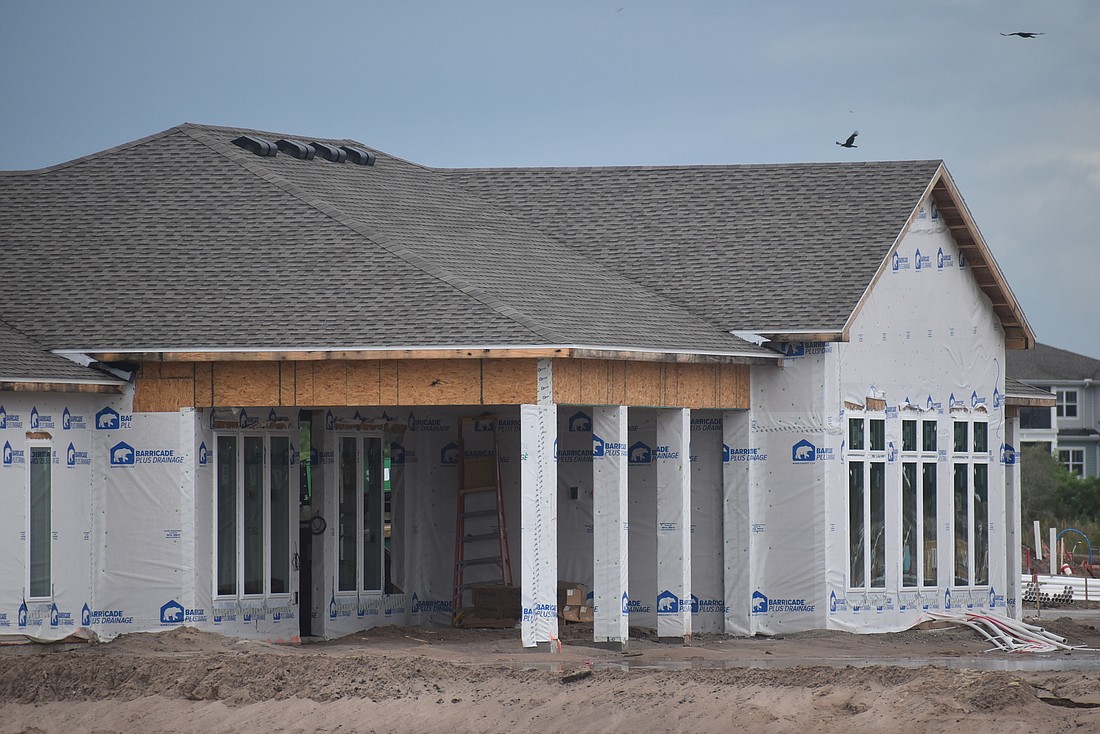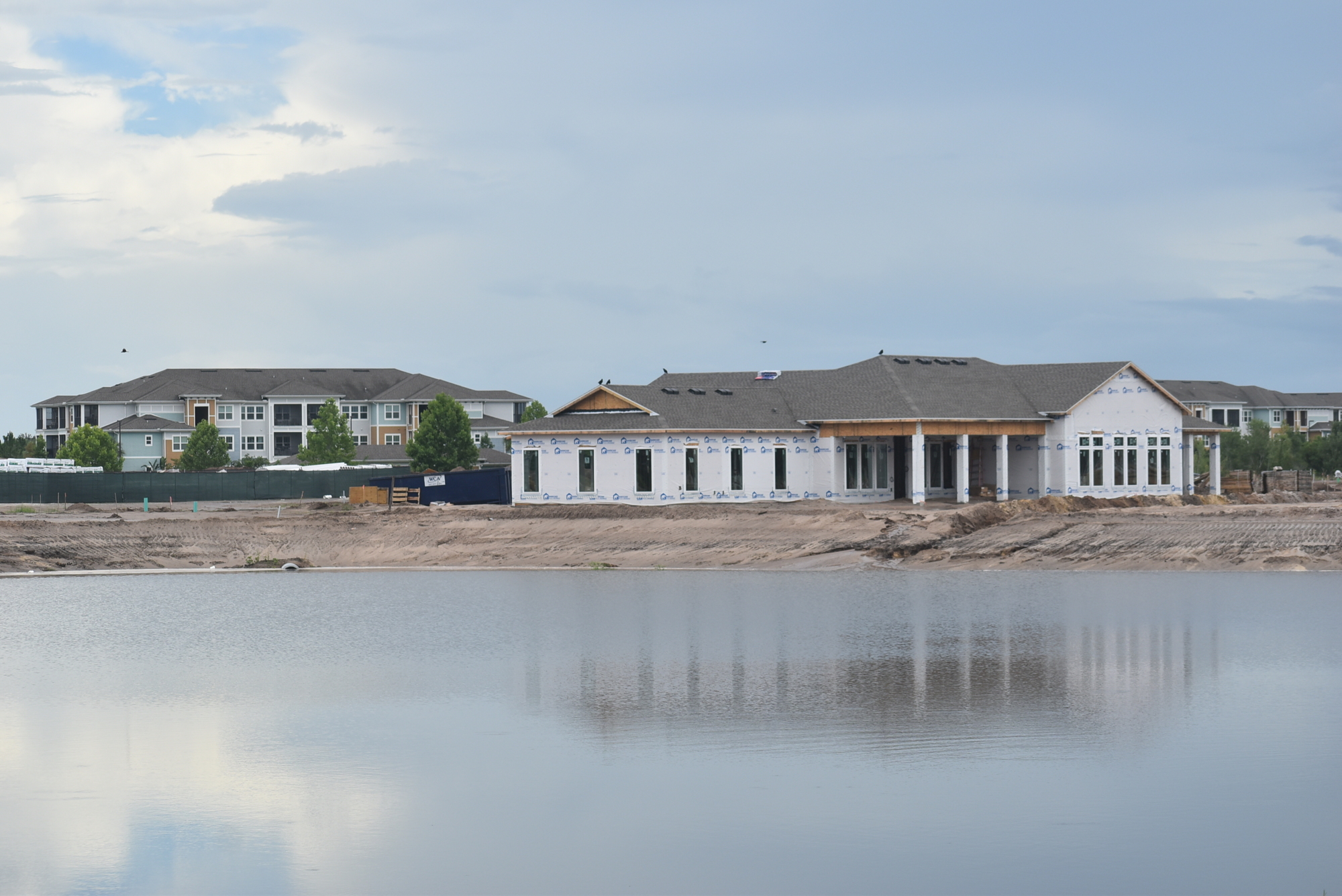- March 13, 2025
-
-
Loading

Despite the rising cost of building supplies that have helped shoot the price of East County homes skyward, area builders and Realtors don't expect those costs to weaken a hot real estate market.
Neal Communities President and CEO Pat Neal said issues in the supply chain have begun to sort themselves out.
“We’re ramping up production for 2021, for 2022 and 2023,” he said.
Even so, the rising cost of building supplies remains a concern to the builders.
Neal's son, John Neal, is president of Neal Land & Neighborhoods, a development company affiliated with homebuilding company Neal Communities. John Neal said arguably the most impactful supply shortage has been lumber. The price of lumber nearly tripled at one point before starting to fall, though he said it is still 223% higher than it was in June 2020. He said his price for 2x4’s is 134% higher than it was a year ago.
Pat Neal said his price of a plywood sheet rose from about $19 to $87, though it is starting to fall. He said the price of an oriented strand board, a type of wood used in construction, has risen from about $14 to about $45 per sheet since November. Each of his houses use anywhere from 97 to 160 sheets.
The cost of constructing most homes has risen $25,000 to $30,000 in lumber alone, according to John Neal. Pat Neal said that figure is as high as $45,000 for his biggest homes. John Neal said he worries about what that means for young families looking to buy starter homes, especially as millennials come of age and start participating in the market. He said a 10% price increase is significant.
Other supply issues have cropped up. Kolter Homes Vice President of Marketing John Manrique said supplying enough garage doors and windows has been challenging. A specific type of pebble used in pool finish has been difficult to find, which can add an extra eight weeks to the completion of a swimming pool, according to John Neal. He said they’re ordering materials 12 to 16 weeks in advance to ensure homes are finished on time, something Manrique’s company has also done.
Pat Neal has been struggling to find paint recently. He has also been using alternative suppliers to find concrete and lumber. He said the average time to construct one of his homes has risen from 120 days to 160 days.

Realtor Association of Sarasota and Manatee President Alex Krumm said suppliers have been overwhelmed with an enormous amount of demand. Even though the cost of lumber, for example, is starting to fall, he said its price is still much higher than before the pandemic. Krumm said the supply shortages were caused by a lack of laborers during the COVID-19 pandemic.
“The plants where they would create the materials, they were shut down,” Krumm said. “A lot of the raw materials — lumber, for instance — are sourced from other countries, and they've been hit even a lot harder than the United States. In a lot of cases, they're still dealing with coronavirus at a very dangerous level for them, where they're still a little bit shut down.”
John Neal said the shortage was caused in part by the manner in which suppliers plan their production. While companies used to keep stockpiles of materials and parts, the modern economy typically revolves around “just-in-time supply.” The latter is more efficient but can lead to problems when there are unexpected bulges in demand.
John Neal said he expects the supply chain to fix itself within the next nine to 10 months. Krumm said it isn't likely to return to normal by the end of 2021, though he expects it will steadily improve. When it does, Krumm said he expects the level of homebuilding to match and possibly even exceed pre-pandemic numbers.
Despite the increase in costs, Krumm said homes sales will remain brisk. He said a "perfect storm" has descended on homes in the region and will remain that way.
He was talking about the litany of factors that have coalesced and caused the price of an average single family home in Manatee County to skyrocket from $463,015 in November to $567,549 in May, an average increase of $17,422 per month.
“I do not see a bottom falling out of this market,” Krumm said. “What I do see is builders having more availability and more ability to build homes for people, which may level out the price increase a little bit, but it's not going to slow the demand. We might see the rate of appreciation drop a little bit, but we are not going to see a market crash.”
He said the demand for homes will continue to be high.
John Neal agreed. He said those in other parts of the country have realized they can work from home. Why not Florida?
"We have low tax," John Neal said. "We're a great place.”
Krumm echoed those sentiments.
“If you can work from anywhere, why not work from the beach?” Krumm added. “People are making that choice and they're making it nationally, and that's why they're moving here.”
Krumm said currently an average Manatee County home is on the market for about six days before it is sold. Practically speaking, he said that number is more like three or four days for buyers who are browsing homes because the last couple days of that six-day period are often used to collect final bids rather than showcase the house and attract prospective purchasers.
For new construction, Krumm said it would typically be 12 to 15 months before people could move into their brand new homes because of shortages in supplies and laborers. In a normal situation, that time would be about eight months.
“This is a normal part of the housing cycle,” John Neal said. “We just follow these patterns. We'll all be fine. We'll all see some great appreciation in our housing values, and then they'll go down a little bit at some time in the future, but then they'll rise again.”